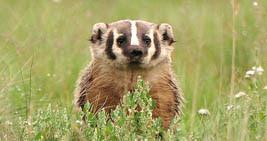GR: Numerous studies have documented the negative impact human presence has on wildlife. Animals avoid areas frequented by people. This is why we must avoid building trails in important habitats. Strolling along a desert stream bank might be pleasing for people, but it is frightening for wildlife. Wildlife is under attack from so many of our activities, it seems that anyone who loves nature enough to want to take a nature walk, would want to take care to avoid the most important wildlife habitats. In deserts, those are the stream banks.

“Halloween is creeping up on us, making this the perfect time to think about what scares you: Is it spiders? Heights? Perhaps this election?In most cases, steering clear of potentially venomous critters or deadly falls is a pretty good survival mechanism. But when you react to fear, it’s not just your own hide you’re saving. Your avoidance of certain animals or places has an impact on the ecosystem, whether it’s the ability of spiders to continue trapping and consuming their insect prey or minimizing high elevation habitat erosion. (Hopefully your fear of this election will lead you to vote, which will certainly have an impact on the world.)
“Fear shapes nature. The fear of being eaten by large carnivores, for example, helps keep smaller carnivores like badgers, foxes and raccoons from wreaking havoc on their food sources, affecting the balance, structure and function of their ecosystem.
“But large carnivore populations have seen truly terrifying losses in recent years. An analysis of 31 carnivore species around the world found that 75 percent are declining, with nearly 55 percent occupying less than half of their former ranges. As these species disappear, so do the benefits they provide, such as habitat restoration, disease control and the fear they instill in other creatures.
“As wolves, bears and other large carnivores have disappeared from ecosystems, scientists have wondered if humans could step into their role in the “landscape of fear.” A new study from Western University tested the theory of whether humans could substitute as the monster-hiding-in-the-bushes for smaller carnivores. After all, we have inflicted the worst slasher movie imaginable on wildlife, with our actions driving plants and animals extinct at 1,000 times the natural background rate.
“It turns out our scare tactics are much, much worse.
“Not only are smaller carnivores killed by human hunters at a rate more than four times greater than by nonhuman carnivores, but the fear we strike in their hearts goes much deeper.


